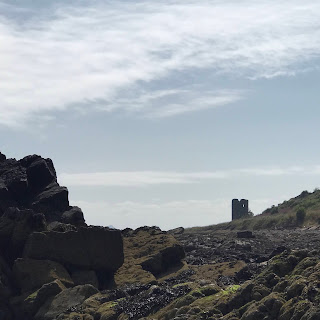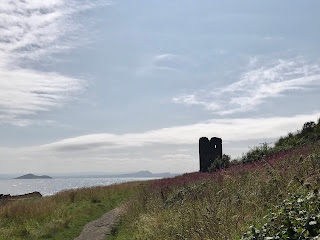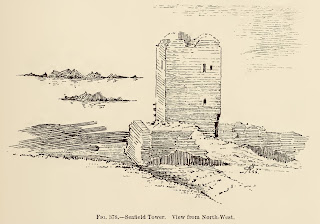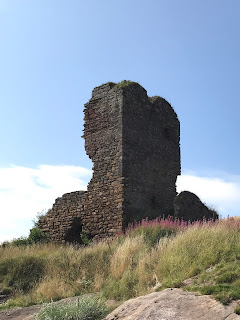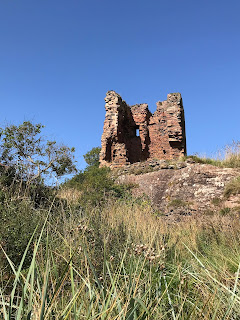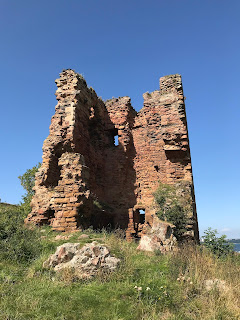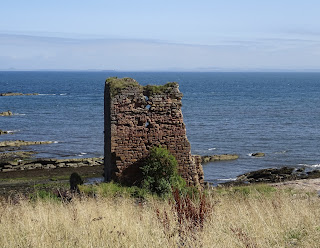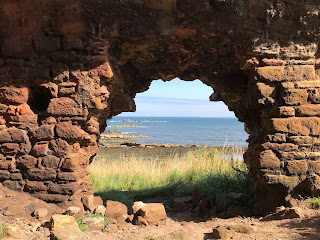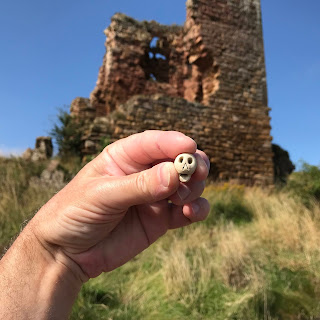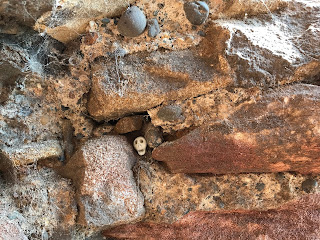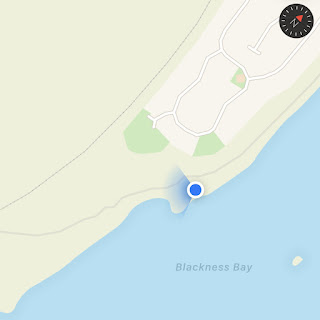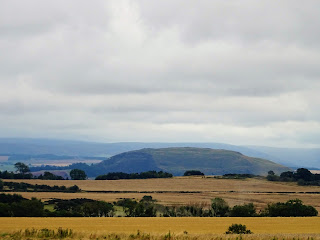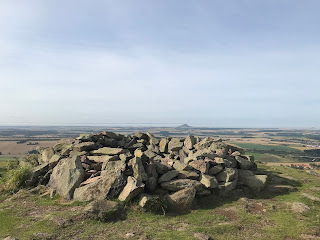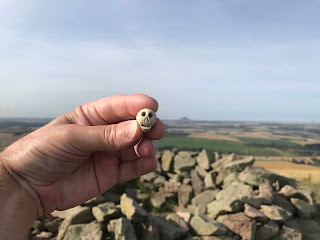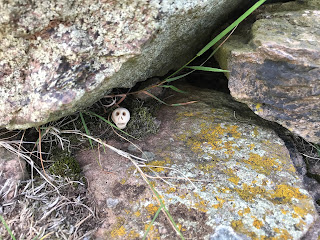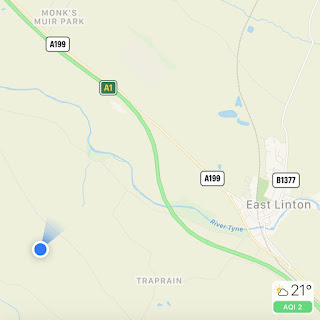The
walk along the Fife Coastal Path, from Kinghorn to Seafield Tower, takes you up and down a narrow trail and past some
spectacular scenery of jagged rocks and crashing waves. There are lots of tiny coves and rocky pits
and hollows to explore, and on a calm day you can see colonies of seals sunning
themselves on the rocks exposed at low tide.
The ruins of Seafield Tower sit on the Fife coast between Kinghorn and Kirkcaldy. It was built in the early to mid-sixteenth century on land that had been granted by King James II to Richard Multrare (Moultrie) in 1443. It remained in the Moultrie family for several generations. In 1631 the tower was sold by Robert Moultrie to James Law, the Archbishop of Glasgow for 19,700 marks (£1,095). After the Archbishop’s death the tower went through several other owners before finally being abandoned and left to fall into ruin.
It is thought that the ruin was used as a smugglers den for a number of
years. It was noted by David MacGibbon
and Thomas Ross when they visited the tower in the late 1880s that smugglers
seemed to have made alterations to the building.
The
Rev. James Taylor mentions the tower in his book ‘Historical Antiquities of
Fife’. He, however, felt it lacked any
historical gravitas and wrote - ‘Passing onwards and eastwards, we come to the…tower
of Seafield. It is built upon a rocky
ledge, which the waves wash, and has the broad Firth as its lawn. Prominent for situation, the eye often turns
to it, and the expectation is awakened, as if it ought to be the scene of
something memorable. But no legend of
romance, no fact of history, no popular tradition, attaches to it. It is a ruined tower by the sea and nothing
more.’
It
would appear that the tower originally consisted of five storeys and was part
of an L shape castle constructed from local red sandstone and surrounded by a
wall on the landward side. It is likely that it followed the pattern of
other castles in this area with storage on the ground floor, the Great Hall on
the level above that and then the upper levels all being given over to accommodation. Much of the building has now gone, with part of
the tower collapsing in a storm in 2013.
I
left the Skulferatu that accompanied me on today’s walk in a gap in a wall
inside the ruins of the tower.
The
coordinates for the location of the Skulferatu are –
Latitude 56.084120
Longitude
-3.159048
I used the following sources for information on Seafield Tower –
The Moultries
South Carolina Historical and
Genealogical Magazine, Vol 5
1904
John Gray Centre – Research
Guide – Old Scottish Money
The Castellated and Domestic Architecture of Scotland from
the Twelfth to the Eighteenth Century
Volume Three
By David MacGibbon and Thomas Ross
1887
Historical Antiquities of
Fife, Chiefly Ecclesiastical, Connected with Some of its Districts
Volume Two
Rev. James W. Taylor
1875
The Scotsman – 8 Lesser-known
castles of Scotland
11 September 2018
8
lesser-known castles of Scotland | The Scotsman
